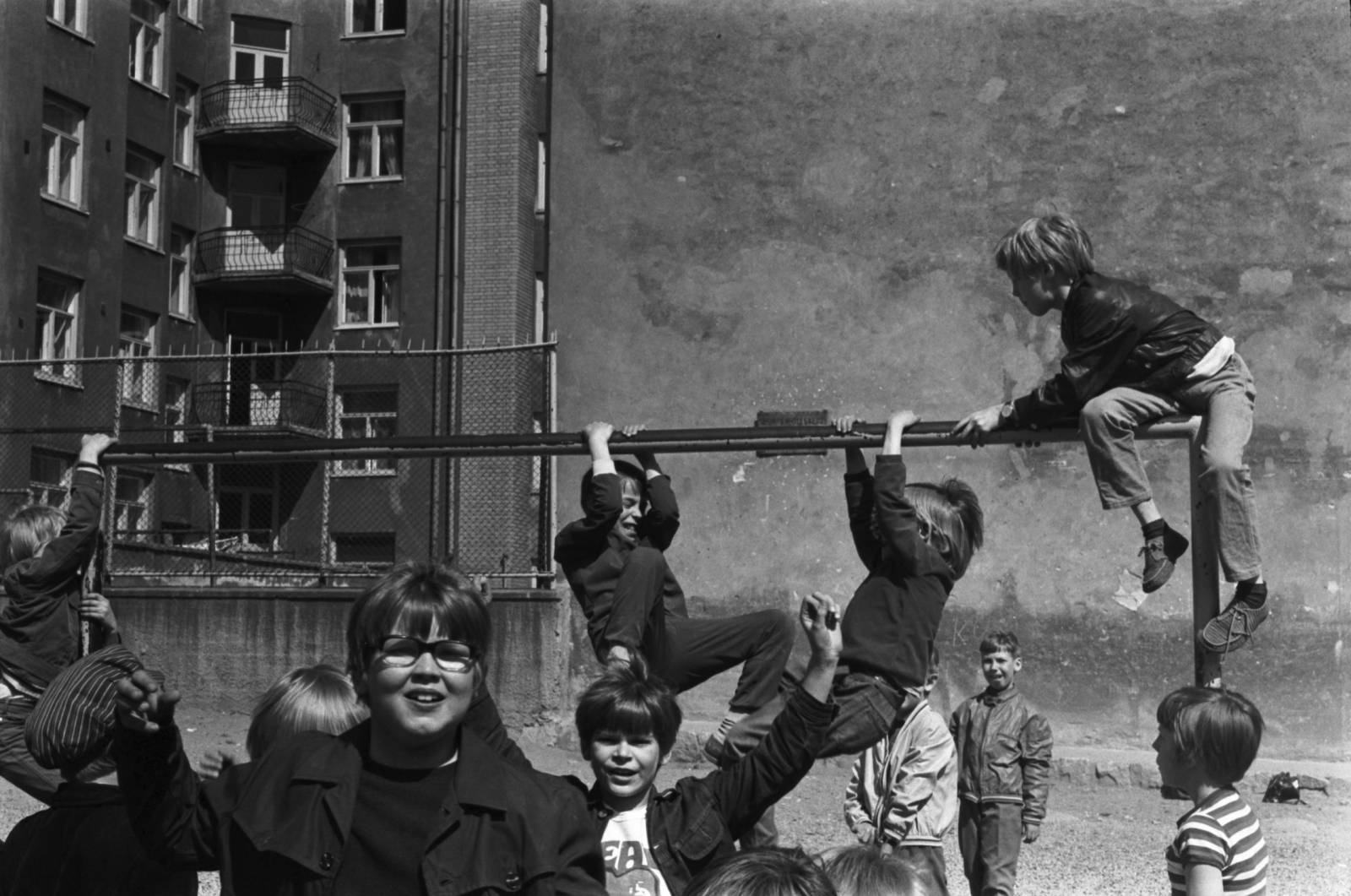Capitalism and socialism had a shared premise: economic growth, modernization and industrialization driven by a desire for progress that were accelerated by an ideological competition.
Just around 30 years ago, the world was divided into two competing camps: capitalist countries of the Western market economy and socialist countries of The Eastern Bloc. The end of the Cold War was marked by the dissolution of the Soviet Union.
While seen as opposites, capitalism and socialism had a shared premise: economic growth, modernization and industrialization driven by a desire for progress that were accelerated by an ideological competition. Both camps of the Cold War believed that humans are in control of all other life forms on Earth. Economic growth and acquiring and consuming material goods were seen as non-ideological forms of progress both in the East and the West. Current global issues are in part the result of these ideologies and competition.
Looking back now, what elements were similar in the desire for progress, anthropocentric ideologies, and view of the future in the capitalist and the socialist worlds? How were these elements different from one another?
Looking back now, what elements were similar in the desire for progress, anthropocentric ideologies, and view of the future in the capitalist and the socialist worlds? How were these elements different from one another?
The Finnish Labour Museum Werstas has opened the Kaleidoscope – Children of the Cold War exhibition, which is based on the childhood memories of everyday life growing up in or visiting socialist countries.
The Kaleidoscope exhibition has been created through the Re-Connect / Re-Collect: Crossing the Divides through Memories of Cold War Childhoods project, coordinated by Tampere University. The Re-Connect / Re-Collect research project gathered childhood memories worldwide from people during 2019–2020. The workshops that were organized in this project had 77 participating researchers and artists from 31 different countries. At the exhibition, these childhood memories can be read, listened to, and watched. In addition to these memories, the exhibition also displays artwork, photographs, and memorabilia from the past. You can learn more about the memories of these Cold War childhoods on the Cold War Childhoods page of the project.
This international project is led by professor of early childhood education Zsuzsa Millei and assistant professor Nelli Piattoeva from the Faculty of Education and Culture at Tampere University, along with professor Iveta Silova at Arizona State University. Together, they form the Mnemo ZIN thought and writing collective.
The Mnemo ZIN collective is interested in the human–nature relationship and societal thinking, divided by the West and the East, which have led to the current situation of anthropogenic climate catastrophe.
These authors are interested in learning how prevalent ideologies, such as socialism and capitalism, shape our childhoods, education and our relationship with our environment.
Most of the memories in this exhibition are set in the Soviet Union and Eastern European countries. These memories show the political history and the ideological presence of the Cold War, but they also show everyday life: living, playing, toys, future plans, and children’s relationship with their environment.
Childhood memories are often attached to everyday items, which bring these memories back to life.
– On both sides of the Iron Curtain, memories of everyday life are surprisingly similar, and this similarity is visible in childhood memories, say the Mnemo ZIN
Memories are not historical truths, but interpretations that are created afterwards. Creating memories together, by examining objects or photos, is a way of making the audience a part of the research process.
Both political systems were anthropocentric and believed in human superiority.
Both political systems were anthropocentric and believed in human superiority. Socialist and capitalist concepts of the ”modern” had many similarities especially if we consider the extraction of raw materials that enabled progress. Exploiting nature, insisting on an instrumental relationship with nature, and seeing the environment and people, children included, as resources for reaching economic growth and ideological superiority were shared in these ideologies, say the Mnemo ZIN collective.
– Now we have a shared existential threat as a legacy from the prevailing ways of thinking from both systems.
Accumulating wealth and materials, competing, and accelerating production were important in both socialist and capitalist systems. The ways of distribution were different.
Countries in both systems pursued, for example, simultaneous efforts of nature conservation. Many farmed local foods for their own use, or sold those to create a second income. Modern agriculture on both sides, however, preferred large scale, centralized production, which was deemed as more efficient.
The state socialist countries differed in what forms of consumption were possible. The opportunities for consumption were dependent on how widespread the freedom of trade and private production were in these countries. Longing for nice and pretty things was present in both the East and the West. The socialist environment also sustained fantasies of consumption, while not directly encouraging consumption.
The researchers of the Mnemo ZIN collective also have their own childhood memories of growing up in state socialist countries. For example, Millei, who grew up in Hungary, remembers that the use of antibiotics on an industrialized chicken farm was seen only as progress to accelerate the growth of chicken for meat consumption. Afterwards, she learned about the problems of antibiotic use and how the West – then and still today – understood it in an similarly positive way.
Concrete suburbs were built on both the East and the West, despite being usually associated with socialism. Unfinished concrete suburbs were an environment that created childhood memories in both the East and the West.
Concrete suburbs were built on both the East and the West, despite being usually associated with socialism. Unfinished concrete suburbs were an environment that created childhood memories in both the East and the West. Children were especially connected by creating their own imaginary worlds in these spaces. These imaginary worlds, along with space exploration and moonwalking, were common themes in children’s games in both the West and the East.
Currently, a generational experience comparable to the Cold War comes from uncertainty, which is driven by the ecological catastrophe caused by the climate change, loss of biodiversity, and the depletion of natural resources.
The problems that are threatening the future of humanity will be visible in future memories, believes the Mnemo ZIN collective.
The young people of the 2000s are the first generation that cannot be expected to earn higher income than their parents or their share of the economic growth, on which the entire, still on-going story of the West is strongly built on. Past economic growth and careless use of natural resources in both the West and the East are direct causes of the current situation.
– The roots of socialism are so deep in industrial modernization that the loss of real socialism puts the story of modern development entirely into question, say the Mnemo ZIN
According to the Mnemo ZIN collective, capitalism and socialism also left a shared legacy of the perspective from which history is written. The Cold War created hierarchies that were permanent and felt natural. Their legacy can still be seen in the way we give value to things.
Socialist countries are often seen as a group of countries similar to one another.
– Socialist countries do not have just one legacy. They also have their own pre- and post-socialist histories, which are also visible in the everyday memories of the Cold War, reminds Nelli Piattoeva of the Mnemo ZIN
Everyday lives were also similar. People had similar dreams and sources of enjoyment, children had similar closeness and tensions with their parents. They came up with their own outdoor games and playgrounds, and plastic toys were played with in both the East and the West. The prevalent ideology was also a starting point for playing. One interviewee told this to the researchers:
The second floor of our school building had a wooden bust of Lenin. Its empty eye sockets were big enough to fit round candies. Its head was high enough so that the mostly female teachers of the school could not reach up and take these candies into their own pockets.
The official stories told by their governments were perceived differently by children who sensed inconsistencies in them. According to the memories shared during this project, children interpreted societal norms, disregarded or opposed them, or used them for their own ends.
Material scarcity and being behind consumption possibilities are often associated with the socialist world. Those who lived their childhoods in socialist countries got their share of culture and intellectual food, since culture belonged to everyone according to the socialist ideology. Childhood was the key to the future, which is why the socialist ideology invested in children and created institutions around childhood. However, the spiritual food that the socialist world offered its children was not void of ideological undertones.
Childhood was the key to the future, which is why the socialist ideology invested in children and created institutions around childhood.
In both the West and the East, children put the norms of adults and the ideals of their political system into practice, while they were also allowed to be children.
– During people’s childhoods in the socialist world, ideology was visible in a more mundane and clear manner. The socialist ideology wanted children to become the ideal citizens, but the capitalist world conversely raised its children for consumerism, say the Mnemo ZIN
In propaganda posters, children were depicted as active builders of the future. Children were directed with hope, along with the burden of building the future.
The ideology was implicit in the capitalist world, while it was explicit in the socialist world, says the researchers of the Mnemo ZIN collective.
Socialist ideology was visible in everyday life. People quickly learned to not care about the ideology, despite its presence everywhere. In the capitalist world, people were socialized into the ideology more indirectly: for example, the ideology was not present in official, ever-present propaganda, but in advertisements and other cultural elements.
– Some people still believe that there exists a neutral, non-ideological curriculum and pedagogy, and that adding, for example, feminist thoughts to it makes it ideological, comments adjunct professor Raisa Foster, who acts as a senior researcher in the Re-Connect / Re-Collect
Kaleidoscope – Children of the Cold War exhibition is open between 26.2.–24.10.2021 at The Finnish Labour Museum Werstas.
Translation by Niko Randell. The translator is a Master’s-level student of Multilingual Communication and Translation Studies at Tampere University. The article was originally published in Finnish in April 2021.






